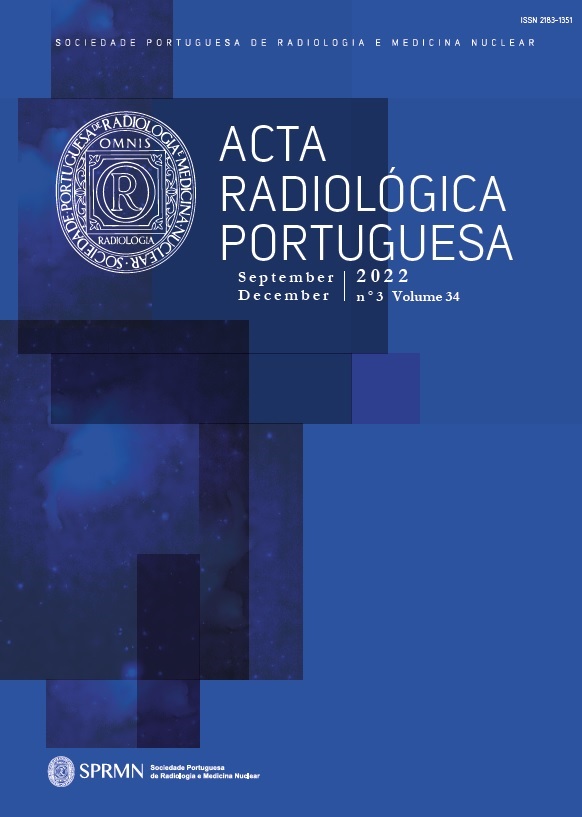Calcificações Coronárias em TC do Tórax em Doentes COVID-19: Prevalência e Impacto Clínico
DOI:
https://doi.org/10.25748/arp.26633Resumo
Introdução: Estudos recentes demonstraram a relação complexa entre infeção por COVID-19, doença cardiovascular e mau prognóstico. Neste contexto, a avaliação das calcificações das artérias coronárias (CAC) pode ser uma ferramenta adicional na estratificação do risco clínico destes doentes.
Métodos: Neste estudo retrospetivo foram recrutados 105 doentes consecutivos infetados com COVID-19, que realizaram TC do tórax sem gating cardíaco, numa única instituição entre Abril e Julho de 2020. As CAC foram avaliadas por dois observadores independentes e classificadas com ausentes, ligeiras, moderadas ou severas. O processo clínico dos doentes foi consultado para informação sobre variáveis demográficas, proteína C reativa à admissão, número de dias hospitalizado, necessidade de suporte ventilatório e morte. Os relatórios originais das TC foram consultados para verificar se mencionavam a presença de CAC.
Resultados: Sessenta e seis (63%) dos doentes avaliados apresentavam CAC na TC. Doentes com qualquer grau de CAC tiveram maior probabilidade de precisar de suporte ventilatório (OR: 3,6) e de morrer (OR: 8,9). Doentes com CAC severas tiveram maior probabilidade de precisar de suporte ventilatório (OR: 4,1), e com CAC moderadas maior probabilidade de morrer (OR: 11,1). Doentes com CAC estiveram internados durante mais tempo (p=0,038). Apenas 21% dos relatórios originais (22 doentes) incluíram informação sobre CAC, mas estas foram mencionadas em 52% (12 doentes) dos relatórios dos doentes com CAC severas.
Conclusão: As CAC estão associadas a pior prognóstico em doentes infetados com COVID-19, e podem ser usadas como uma ferramenta adicional na estratificação do risco clínico destes doentes. As CAC devem ser incluídas no relatório do radiologista sempre que observadas.
Downloads
Publicado
Edição
Secção
Licença
CC BY-NC 4.0


